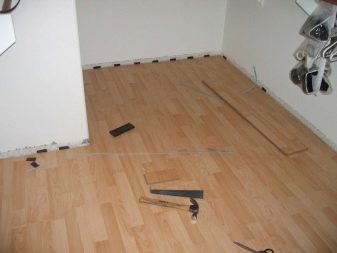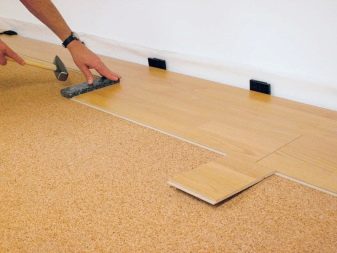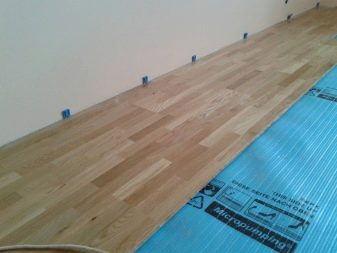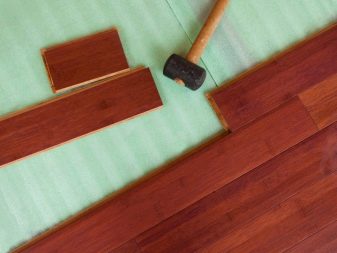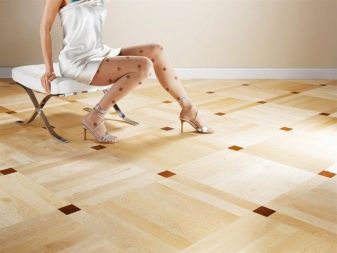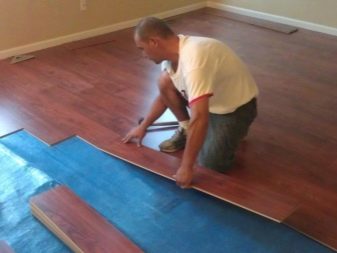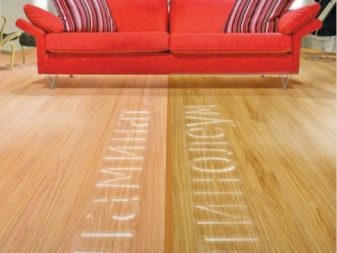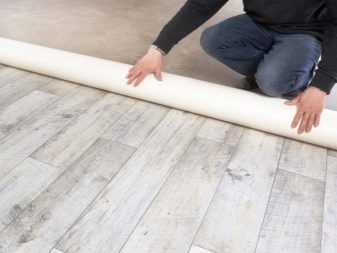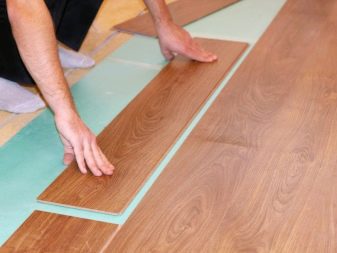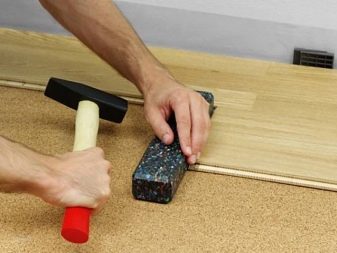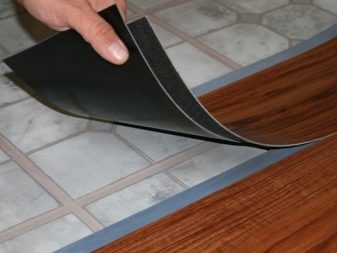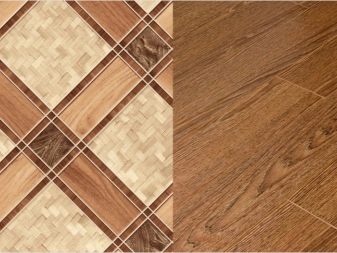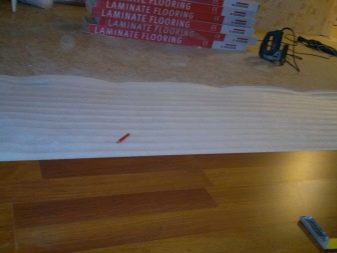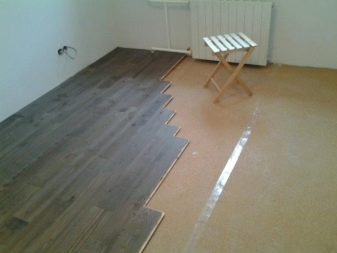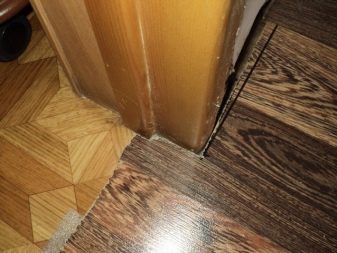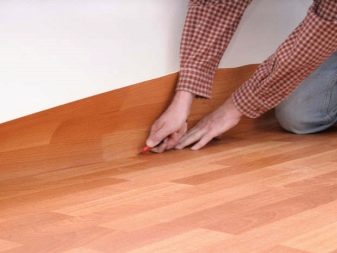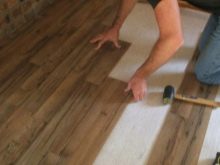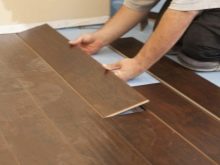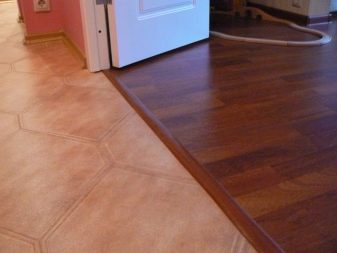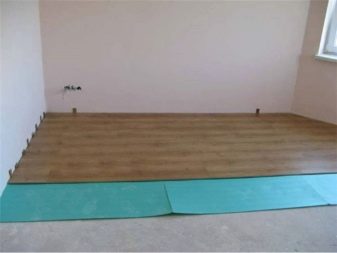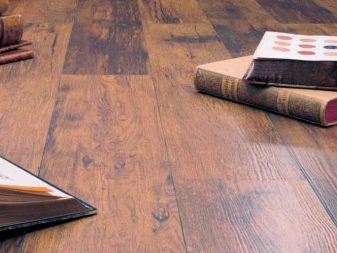Is it possible to lay laminate on linoleum?
Repair work in any residential building involves finishing the floors. Today, for such purposes they use many materials that differ in design and practicality. Particular attention should be paid to the laminate, which fits perfectly into any modern interior.
But very often the owners plan to lay it on the old floor. Before you perform such operations, you should check with a specialist whether it is possible to lay laminate on linoleum. This will eliminate unpleasant situations that may arise during the operation of the system.
Advantages and disadvantages
Installation of laminate of any type involves the arrangement of a special substrate that will protect the material from height differences, and also will not allow it to sag.This layer also acts as an additional heat insulator, preventing cold from penetrating the floor into the room. Today, many owners are wondering if it is realistic to lay laminate on linoleum. At first glance, this sounds absurd, but at the same time there are people who practice this.
This approach has several significant advantages:
- Linoleum is an excellent substrate, as the material very well dampens sound waves. Such an approach will allow you to create comfortable living conditions, which will not affect the neighbors below.
- There is no need to lay additional cork under the laminate. This not only saves time, but also finances. This is especially important if you do not have time to replace this coating with a new alternative.
- Linoleum perfectly retains heat. This reduces its losses through the floor, which, accordingly, will lead to a reduction in financial costs. In order to improve this property, additional layers of heat and moisture insulators can be laid on top of this substance.
- Material does not pass moisture from below. Therefore, it will additionally protect the laminate from swelling.
But this approach is not always universal, therefore, if you put a substance in the wrong way, then it can quickly lose its original properties. Over time, this will lead to cracks, squeaks, sagging and many other defects.
Please note that some types of laminate can be laid on special adhesive mixtures. This already excludes the use of linoleum as a substrate, since the solutions are intended only for concrete floors.
Base requirements
Laying laminate requires a carefully prepared base. It should be noted a few main requirements for the surface to be used as a substrate:
- It is desirable to lay the laminate on the base with a smooth surface. Minimum height differences are allowed: no more than 3 mm. Therefore, if the floor meets these requirements, then the tree can be mounted directly on the old linoleum from above without the substrate.
- Surface moisture should not be higher than 2%. Therefore, if the linoleum is wet, it must be pre-dried to prevent water from entering the wood surface. Note,often condensation may form on the surface of the polymer coating due to temperature differences between the floor and the room. Such a phenomenon is not the usual drying. Here you need to use an additional insulating substrate. A great option is linoleum, laid on a wooden floor.
- To check the moisture level of linoleum, you should put a plastic wrap on it and leave it for several days. If after this time condensation has formed on its surface, then this means that linoleum contains a lot of water and is not suitable for use.
Some experts also recommend the use of special substrates that are placed between the linoleum and the laminate. This will ensure the reliability and durability of the entire system.
Styling rules
Installing a laminate is a relatively simple operation. But in order to get a high-quality and durable coating, A few simple rules should be followed:
- When buying a laminate, it is important to consider its thickness, so that after installation it does not interfere with the opening of interior doors.
- Laying sheets, experts recommend the use of long and wide panels, as this will reduce waste. Buy a volume of laminate with a small margin, because if you do not have experience, you can not accurately calculate the required amount of material.
- Laminate should be placed along the window so that the rays fall on it in parallel. But if you want to get a unique pattern, you can arrange the sheets and at a certain angle.
- After laying, the first row of the laminate must be fixed with special wedges. This will not allow him to further move from place, giving the opportunity to quickly lay all the other rows.
- If, together with linoleum, an additional cork backing is used, then it is desirable to lay all the plates across it. Therefore, it is important to take this into account during the location of the heat-insulating layer.
- Installation work must begin after the wood has lain in the house for some time. This is necessary so that it acquires the temperature of the room and adapts to the conditions.
- Experts recommend starting each new row (or one through) with a cut piece.Thus you can save laminate and create a certain pattern. It is desirable to cut wood only with a jigsaw or saw with very fine teeth.
Where can I lay the product on the left linoleum?
Technically, linoleum is indestructible from moisture, but this phenomenon is not suitable for laminate. Therefore, it should not be laid in rooms with high humidity. From this it should be concluded that for the bathroom or kitchen it is best to use special technologies that exclude the use of linoleum as a substrate. note that Today there is a moisture resistant laminate, but it also requires special installation.
Many experts argue that to mount such systems in the bathroom is still possible. But for this you need to equip a high-quality moisture-proof layer. It is made of several layers of plastic film, which is located directly above the linoleum and under the additional substrate.
It is best to use a combination of linoleum and laminate in the living room or bedroom, where there is moderate humidity.
We take into account the nuances
Installation of laminate is a complicated procedure that cannot be done without certain skills. The use of linoleum as a substrate imposes even greater restrictions. When performing such operations, you should consider a few weighty nuances:
- Laying laminate can be carried out only on the linoleum glued to the floor. This eliminates the appearance of air bubbles beneath it, and also eliminates the occurrence of surges. All of these factors can have a detrimental effect on laminate, which will quickly fail. Therefore, if you decide to carry out the installation of such substances, you should additionally take care of the fixation of linoleum. Please note that if it is not fixed, then it is better to think about using a substrate instead of a polymer product - linoleum.
- Only relatively new linoleum can be used as a substrate. If this product has already served you for about 10-15 years, then its use is not effective, as it will quickly fail. This in turn will damage the laminate sheets. Another factor that precludes the use of old material is the accumulation of many bacteria under it,ticks and other pests.
- Linoleum must be intact, without significant damage, cracks or cuts. Therefore, before you start laying laminate, you should eliminate these disadvantages. This can be done in several simple ways. The best option would be to use cold welding. To restore the sheet, you need to cut the damaged part, and in its place insert a new piece of the same shape. Then all the seams around the perimeter are filled with cold welding, which converts the linoleum to a liquid state. After that, the parts simply fuse and form a strong and durable seam. An alternative is hot welding. A similar approach also involves the melting of linoleum, but this is already done with the help of special heating elements.
Examples and options
As you understand, laying laminate on linoleum is a very real idea that you can do yourself. This process can be divided into several successive stages:
- First, surface preparation is performed. This step involves leveling the floor. Note, if the linoleum is on the surface with large differences, then it needs to be corrected.Therefore, the material is dismantled, and the entire floor is poured with a self-leveling cement mixture.
- The next step is to fix the linoleum to the surface. For such purposes use special adhesives. The best option would be water-dispersion solutions that are suitable for almost all types of surface. When choosing them, it is important to take into account the structure of linoleum. Some blends can only bind PVC products, while others are used for thicker versions with a fabric or nap substrate.
- The technology of fixing linoleum to the floor is quite simple and involves applying the mixture to the surface with a spatula and laying the canvas on it. To get rid of irregularities and air, you should align the linoleum with the help of special rollers.
- In the next step, laying the laminate begins. It begins with one side of the room near the wall. The first row should be leveled relative to one of the planes, as well as 1-2 cm back from the wall. This will allow the material to expand with temperature and humidity variations. Between the elements of the series are connected with the help of special grooves. If the length of one board is longer, then you need to trim it with a jigsaw.
- The next row fits in the same way. But at the same time the neighboring boards are already fastened together. For this, there are special locks on their ends. They can be of various kinds. Some simply fit and match, while for others, for fixation, you need to insert the next plank at a 45-degree angle, and then carefully lower
- All other rows fit the same principle. When installing the last layer, then you need to use a special bracket. It is located in the gap between the wall and the board. To fix the laminate, this element is hit with a hammer so that the clamp presses the adjacent elements.
Laying laminate on linoleum is practically no different from the standard installation technology of this product. To ensure the normal functioning of the canvas, you should simply properly prepare the surface, following simple guidelines.
How to lay the laminate on linoleum and what is required for this, see the next video.

